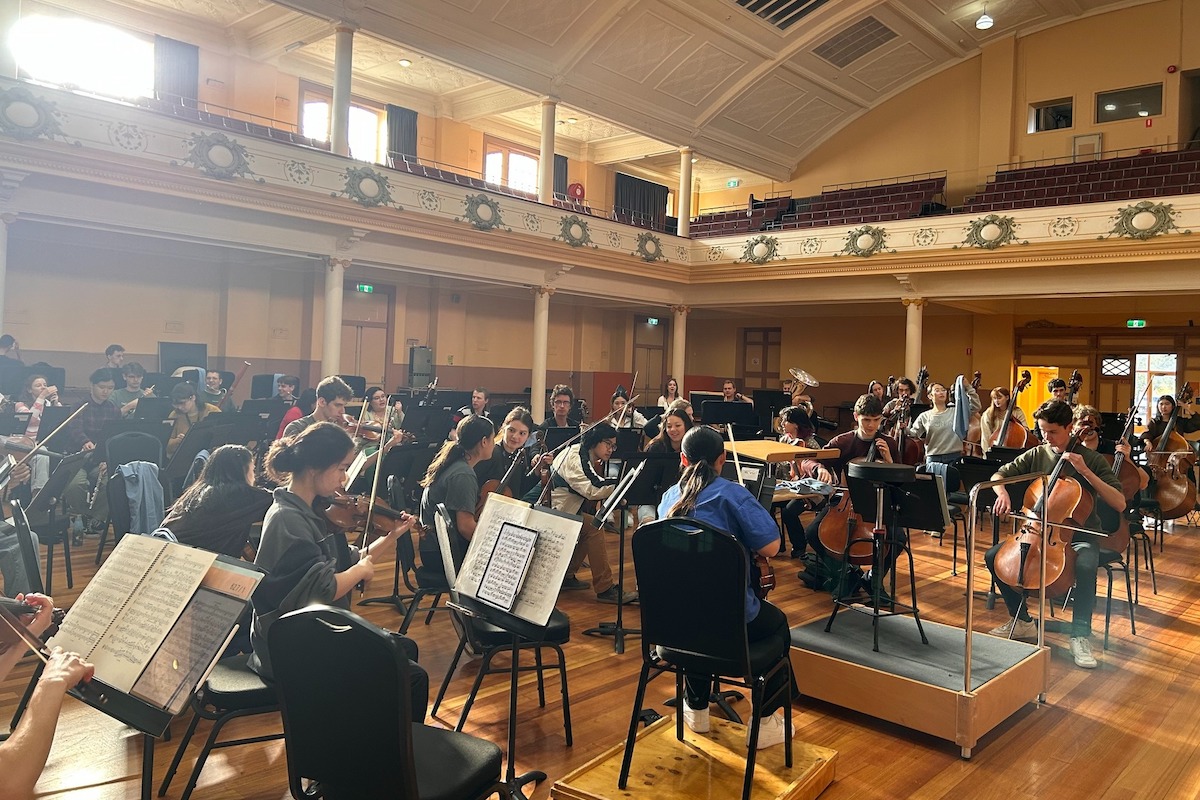There is a special thrill that comes from hearing a top flight youth orchestra performing big repertoire pieces.
I recall with great pleasure the Hobart AISOI concerts in the decade ending December 2016 where up to 120 of the country’s best young musicians gathered annually in Hobart to play and give Tasmanian premieres at the City Hall of major works by the likes of Mahler, Bruckner, Richard Strauss and Stravinsky.
This sense of highly skilled young musicians discovering for the first time some of the repertoire’s masterworks was present in spades in this Federation Hall concert by the Australian Youth Orchestra.

AYO in rehearsal, Federation Hall, Hobart.
With a full strength of 84 players, the AYO immediately dazzled in the quality and depth of string tone in Ravel’s La Valse, starting with that wonderful double bass section.
Conductor Alexandre Bloch used a very flexible approach in regard to tempi with expressively shaped phrasing throughout. In the powerfully wrought climaxes, brass and percussion burst upon the listener with enormous force; the woodwinds were always piquant and beautifully blended.
Karol Szymanowski’s Violin Concerto No. 2, Op. 61 was his last composition. It is in one movement with two sections linked by a cadenza by Pavel Kochanski, who gave the first performance in 1933. The style of the piece draws heavily on the indigenous traditions of the mountain people in the border area of Poland and Slovakia.
The Australian Chamber Orchestra’s Principal Violin Satu Vänskä undertook this virtuoso work with superbly focussed and tonally resplendent results. The orchestration was richly colourful with the violin line frequently an equal partner in the texture; winds and brass made high quality contributions. The encore was a beautiful arrangement for violin and small string ensemble of Debussy’s La fille aux cheveux de lin (The Girl with the Flaxen Hair).
Prokofiev’s Symphony No. 5 in B-flat major, Op. 100 provided a spectacular conclusion to the concert.
While observing the traditional 4-movements, the composer here presents a large scale, technically challenging structure making high demands on any orchestra with frequent extremes of tempo and rhythmic emphasis.
This music, at times biting, sardonic and violent, was written in the closing days of World War II and the first performance was given in Moscow on 13 January 1945 with the composer conducting. The AYO and conductor Bloch delivered a rendition that was powerfully detailed and vivid. They expertly conveyed the range of moods from the expansive to the dramatically intense. All sections of the orchestra gave full blooded, eager commitment to this turbulent symphony.
It was a fitting culmination to a most exciting evening.











Comments
Log in to join the conversation.